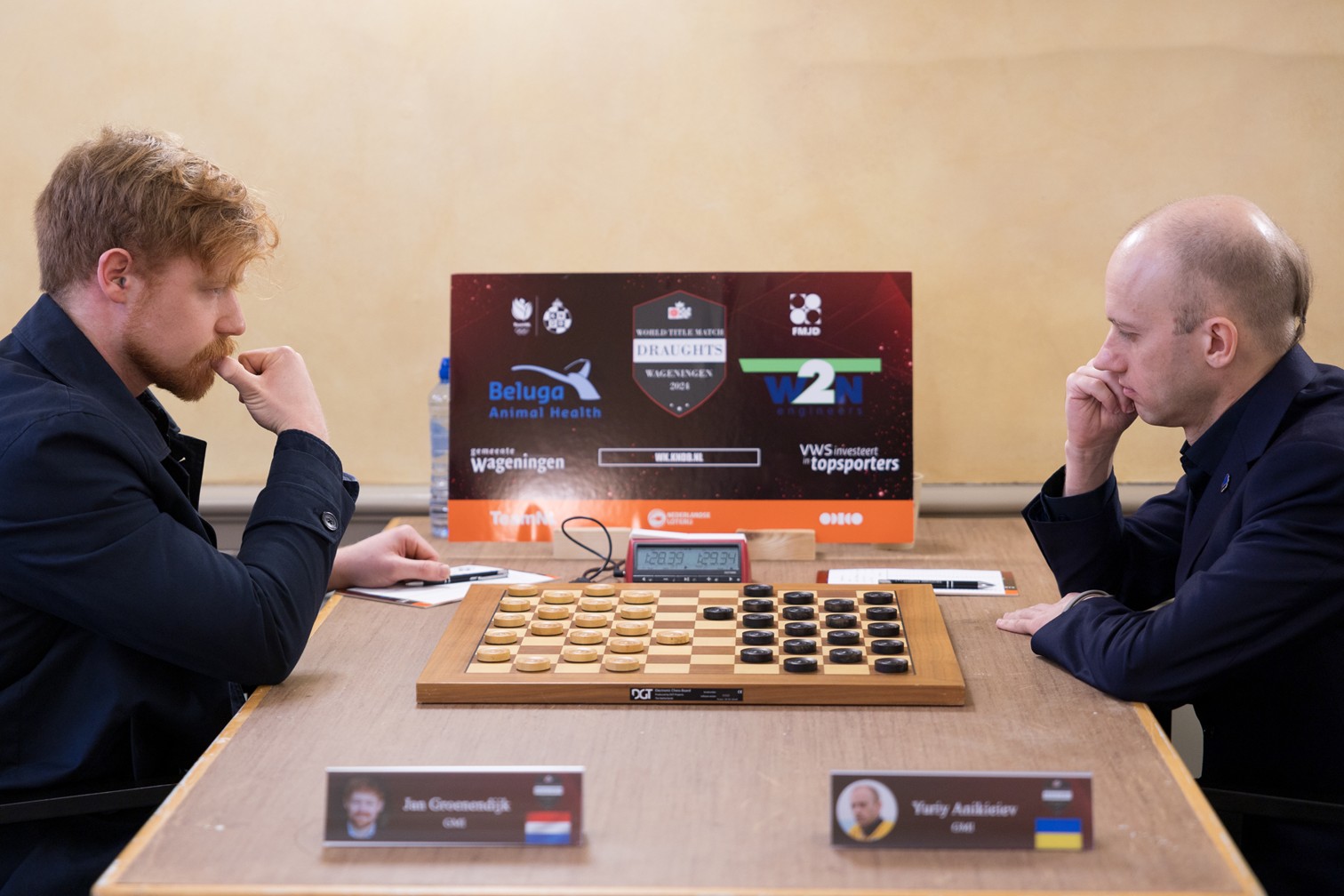The eighth game actually went exactly as I had hoped. With simple means, I managed to get a slight advantage. Anikeev played actively in the middlegame from a slightly more passive position, but he couldn’t keep it up and eventually switched to a passive defense. In the end, it turned out to be manageable, and the position remained clearly equal. But I had followed my intuition the entire game, and that was enough to put him under a bit of pressure. That alone gave me a good feeling.
After this eighth game with Black, we looked for new ideas with White during our team meeting. We still had plenty of ideas on the table, but it was almost certain that he would deviate early on somewhere. In the previous game with White, I had come out of the opening in a very promising position, but I doubted he would go for that two-for-two exchange to 36 again. He had probably prepared an earlier, more simplifying line. By now, it had become clear to me that he had a few openings up his sleeve to sidestep my preparation, which he kept trying to repeat. By giving me slight initiative or a somewhat easier position, he let me believe I was on the right track, which made me want to repeat the opening. That way, he could play 15 to 20 “free” moves without any real danger and always had enough time on the clock to calculate any complications later on. Whether this was a conscious strategy of his, I don’t know; but in any case, I wanted to change my approach for the last four games.
I wanted to surprise him, ideally as early as possible in the opening, to get us out of familiar territory. I also wanted to give him some difficult decisions, or at least try to lure him into certain types of positions. The first part is manageable, but trying to lure someone who doesn’t really want to play an exciting game is not easy. You often have to push your own limits a bit. Normally, I’m up for that, but in a match, it’s also quite risky.
In our team meeting, we looked at all the typical opening moves: 1.35-30, 1.34-30, 1.31-26, and the two moves I had already played: 1.32-28 and 1.34-29. However, we hadn’t found any noteworthy new lines for those last two, so I basically ruled them out. I wanted something new—but what?
The meeting was dragging on, until one of my teammates came up with a new idea in the Keller line. He had seen it suggested by the Scan engine, and we started to explore it a bit. I had written off the Keller with White at first, especially since he almost always responds with 1...17-22 after 1.33-29. So we really had to come up with something to avoid getting into that Keller line where Black has 25 well-known moves. For every other opening move so far, he had a way to simplify things, but I just had a feeling that after 1.33-29, he would go for 17-22. I needed a bit of convincing, but at this point in the match, it was worth trying. If he wasn’t paying close attention for a moment, a very fascinating game could unfold. And for me, the risk was relatively low—a win-win situation!
